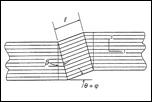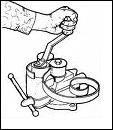Richard M. Christensen |
||
|
||||
Recent Additons |
||||||
Key Junctures |
||
 |
||||
General Matters |
||||
 |
||||
 |
||||||||
 |
||||||||
 |
||||||||
 |
||||||||
Can Atomic/Nano Scale |
||||||||
 |
||||||
 |
||||||
 |
||||||
 |
||||||
 |
||||||||
 |
||||||
 |
||||||
 |
||||||||
 |
||||||||
 |
||||||
Copyright© 2019 |
||||||
New Book on Failure

The new book “The Theory of Materials Failure” was published by Oxford University Press (OUP) on March 14, 2013. The author is R. M. Christensen.
The new book is the logical projection from this website. Although the book and the website cover the same general topic, each has its own distinctive purposes, differences, and contents. The website is designed for quick and easy access to reliable information on an important and rapidly developing field. The book is presented and organized as a freestanding resource on the research, practice, and teaching for the materials failure discipline. Both the book and the website adhere to the same technical standards.
The hard cover book is available and can be ordered from OUP and Amazon. The e-book form is also available.
For more information on the book please visit the OUP websites, and Amazon.com.
http://ukcatalogue.oup.com/product/9780199662111.do
http://www.oup.com/us/catalog/general/subject/Physics/MaterialsScience/?view=usa&ci=9780199662111
A review of the new book from Amazon.com is shown below.

The preface from the new book is reprinted below.
The Theory of Materials Failure by R. M. Christensen
Oxford University Press
Preface
The technical and scholarly interest in materials failure goes back almost to the beginnings of classical mechanics and deformable body mechanics. The effort to put order and organization into the field of failure characterization and failure criteria has been unflagging over the ensuing time span, measured in decades, even centuries. Despite the high level of sustained activity, the long time rate of progress was agonizingly slow.
By many measures of difficulty, the treatment of failure in solids (materials) is comparable to that of turbulence in fluids, both are controlled by nonlinear physical effects. It is only in the modern era that the elements needed for constructing a complete, three-dimensional theory of failure for homogeneous materials have coalesced into meaningful forms. This book presents the derivation and detailed examination of the resulting general theory of failure for materials science and materials engineering.
Chapter 1 outlines the materials failure problem and completely sets the course for all that follows. The coverage spans the full range, starting with the efforts of some of history’s greatest scientists and ultimately coming up to the most recent developments, such as the failure of anisotropic fiber composite materials and an examination of microscale and nanoscale failure. Many inter-related areas of the materials failure discipline are included. Although the coverage is broad, there is no compromise in quality or rigor.
The world of materials synthesis and materials applications offers many opportunities and many challenges. Few are of higher priority or in greater need than that of understanding materials failure.



